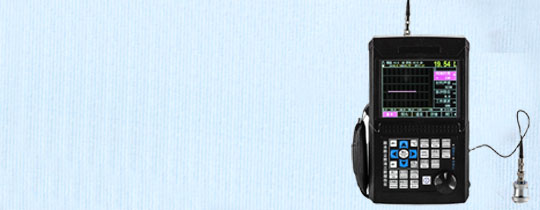
Inductive proximity switch IFL 10-30L-10TP
Inductive proximity switch IFL 10-30L-10TPThe proximity switch is a key component of industrial automation and is widely used in various industries such as machinery, machine tool manufacturing, textile, papermaking, light industry, food, chemical, mining, metallurgy, etc. It is used for limit, positioning detection, automatic counting, speed measurement, automatic protection, industrial automatic assembly line and microcomputer signal, numerical control device, etc. It plays a huge role in improving the control system and reliability.
- ZHUOXIN
- 24v-110v-220v-380v
- IP65
- TT, Paypal, Credit card, Western union
- +86-15163766288
- Inductive proximity switch IFL 10-30L-10TPThe proximity switch is a key component of industrial automation and is widely used in various industries such as machinery, machine tool manufacturing, textile, papermaking, light industry, food, chemical, mining, metallurgy, etc. It is used for limit, positioning detection, automatic counting, speed measurement, automatic protection, industrial automatic assembly line and microcomputer signal, numerical control device, etc. It plays a huge role in improving the control system and reliability.
Description

Inductive proximity switch IFL 10-30L-10TP
The proximity switch is a key component of industrial automation and is widely used in various industries such as machinery, machine tool manufacturing, textile, papermaking, light industry, food, chemical, mining, metallurgy, etc. It is used for limit, positioning detection, automatic counting, speed measurement, automatic protection, industrial automatic assembly line and microcomputer signal, numerical control device, etc. It plays a huge role in improving the control system and reliability. 【 Introduction to proximity switch 】 & nbsp; Proximity switch usage characteristics:& nbsp; A proximity switch is a switch type sensor (i.e. a contactless travel switch) that combines the characteristics of a travel switch and a micro switch, as well as the performance of a sensor. It is characterized by reliable action, stable performance, frequency response, long service life, strong capability, waterproof, shock resistant, and corrosion-resistant properties. It is widely used in industries such as machine tools, metallurgy, textiles, and printing. In automatic control systems, it can be used as a limiting, counting, positioning control, and automatic protection link& nbsp; A proximity switch consists of three main parts: an oscillator, a switch circuit, and an amplifying output circuit. The oscillator generates an alternating magnetic field. When the metal target approaches this magnetic field and reaches the induction distance, eddy currents are generated inside the metal target, causing oscillation attenuation until it stops. The oscillation and stop changes of the oscillator are processed by the post amplification circuit and converted into switch signals, triggering the driving components to achieve non-contact detection& nbsp; A proximity switch, also known as a contactless proximity switch, is an electronic switch quantity sensor. When the metal detector approaches the sensing area of the switch, the switch can quickly issue electrical commands without contact, pressure, or sparks, accurately reflecting the position and stroke of the moving mechanism. Even for general stroke control, its positioning, operating frequency, service life, ease of installation and adjustment, and adaptability to harsh environments cannot be compared to general mechanical stroke switches& nbsp; Introduction to Hall switch principle:& nbsp; When a metal or semiconductor sheet with current is vertically placed in a magnetic field, a potential difference will occur between the two ends of the sheet, which is called the Hall effect. The potential difference between the two ends is called the Hall potential U;, Its expression is & nbsp;U=K&miot;I&miot;B/ , Among them, K is the Hall coefficient, I is the current passing through the thin film, B is the magnetic induction intensity of the external magnetic field (Lorrentz force), and is the thickness of the thin film& nbsp; It can be seen from this that& nbsp; The sensitivity of the Hall effect is directly proportional to the magnetic induction intensity of the external magnetic field& nbsp; Hall switches belong to this type of active magneto electric conversion device, which is made on the basis of the Hall effect principle, using integrated packaging and assembly processes. It can easily convert magnetic input signals into practical application signals, while also meeting the requirements of easy operation and reliability in industrial applications& nbsp; The input terminal of a Hall switch is characterized by the magnetic induction intensity B. When the value of B reaches a certain level (such as B1), the trigger inside the Hall switch flips, and the output level state of the Hall switch also flips. The output terminal generally uses transistor output, similar to sensors, and can be divided into NPN, PNP, normally open, normally closed, latch type (bipolar), and dual signal output& nbsp; Hall switches have characteristics such as non-contact, power consumption, long service life, and response frequency. They are sealed with epoxy resin inside, so they can work reliably in various harsh environments. Hall switches can be applied to proximity sensors, pressure sensors, odometers, etc. as a new type of electrical accessory& nbsp; The principle of linear proximity sensor& nbsp; Working principle: Linear proximity sensor is a linear device belonging to metal induction. After the power is turned on, an alternating magnetic field will be generated on the sensing surface of the sensor. When a metal object approaches this sensing surface, eddy currents will be generated in the metal to absorb the energy of the oscillator, causing the output amplitude of the oscillator to decay linearly. Then, based on the change in attenuation, the non-contact detection of the object will be completed& nbsp; This proximity sensor has no sliding contacts, is not affected by non-metallic factors such as dust during operation, and has high power consumption and long lifespan. It can be used in various harsh conditions. Linear sensors are mainly used for intelligent control of analog quantities in automation equipment lines& nbsp; Working principle of inductive proximity switch& nbsp; Inductive proximity switch consists of three main parts: oscillator, switch circuit, and amplification output circuit. The oscillator generates an alternating magnetic field, and when the metal target approaches this magnetic field and reaches the induction distance, eddy currents are generated inside the metal target, causing oscillation attenuation and even stopping. The changes in oscillator oscillation and stop oscillation are processed by the post amplification circuit and converted into switch signals, triggering the driving components to achieve non-contact detection& nbsp; Approaching switch point:& nbsp; The proximity switch can detect in a non-contact manner, so it will not wear or damage the detected object. Proximity switches often use semiconductor transistors (collectors) for control signal output, compared to mechanical action output controlDue to the use of contactless output, semiconductor output has a faster reaction speed and longer service life, without affecting the lifespan of the contacts. Unlike the light detection method, it is almost unaffected by the stains and oil, water, etc. of the detection object when used in harsh environments such as water and oil. Compared with contact switches, due to the use of semiconductor transistors (collectors) as control outputs, it can achieve fast response and can also be used for speed measurement. Can correspond to a wide temperature range: According to the detection principle of inductive proximity switches, the sensor is not affected by the color of the detected object and detects changes in its physical properties, so it is almost unaffected by surface color and other factors. The proximity switch is designed to detect the movement and presence of an object through contact detection, and can convert this information into electrical signals. It is a product with limit switches, travel switches, and contact detection methods& nbsp; Inductive proximity switch IFL; 10-30-01T IFL 10-30-10T IFL 15-30-01T IFL 15-30-10T IFL 10-30-01T-1310 Inductive proximity switch IFL 10-30L-10TP; IFL 10-30-10T-1310 IFL 15-30-01T-1310 IFL 15-30-10T-1310 IFL 15-300-01T IFL 15-300-10T IFL 10-30M-10N IFL 10-30M-10P IFL 15-30M-10P IFL 10-30M-10ST1P IFL 15-30M-10ST1P IFL 15-300M-10N IFL 15-300M-10P IFL 10-30L-10TN IFL 10-30L-10TP IFL 15-30L-10TN IFL 15-30L-10TP IFL 15-30L-10TP-2130 IFL 15-300L-01TP IFL 15-300L-10TN IFL 15-300L-10TP IFL 10-30-10/01 IFL 15-30-10/01 IFL 15-300-10/01 IFL 15-300-10/01 IFL 10-30L-10/01N IFL 10-30L-10/01P IFL 15-30L-10/01N&nbs p. IFL 15-30L-10/01P IFL 15-300L-10/01N IFL 10-30L-11TN IFL 10-30L-11TP-1766 IFL 15-30L-11TP-1766 IFL 15-300L-11TN IFL 15-300L-11TP Speed Sensor: SK-G-K4; Flow cotton display instrument: QH-60 Analog sensor: NI8-M18-LIU; BI8-M18-LIU GY-10-V05/LP3 R-A1PM/XVP(QB-F-PKT-CP) Memory sensor: GMUM18); Q-GF-KH5B GMLLM18 Magnetic switch: QM/134/N/5; QM34/S/5 2C -A54 -18-AK5 Hall switch: NJK8002; SH704-3B Digital display sensor: GA-24050; Displacement sensor: GY-V50L/0-10MM; GY-V70L/0-10MM FXB-V61HL/5MM FXB-V61H/+5MM SH303
The proximity switch is a key component of industrial automation and is widely used in various industries such as machinery, machine tool manufacturing, textile, papermaking, light industry, food, chemical, mining, metallurgy, etc. It is used for limit, positioning detection, automatic counting, speed measurement, automatic protection, industrial automatic assembly line and microcomputer signal, numerical control device, etc. It plays a huge role in improving the control system and reliability. 【 Introduction to proximity switch 】 & nbsp; Proximity switch usage characteristics:& nbsp; A proximity switch is a switch type sensor (i.e. a contactless travel switch) that combines the characteristics of a travel switch and a micro switch, as well as the performance of a sensor. It is characterized by reliable action, stable performance, frequency response, long service life, strong capability, waterproof, shock resistant, and corrosion-resistant properties. It is widely used in industries such as machine tools, metallurgy, textiles, and printing. In automatic control systems, it can be used as a limiting, counting, positioning control, and automatic protection link& nbsp; A proximity switch consists of three main parts: an oscillator, a switch circuit, and an amplifying output circuit. The oscillator generates an alternating magnetic field. When the metal target approaches this magnetic field and reaches the induction distance, eddy currents are generated inside the metal target, causing oscillation attenuation until it stops. The oscillation and stop changes of the oscillator are processed by the post amplification circuit and converted into switch signals, triggering the driving components to achieve non-contact detection& nbsp; A proximity switch, also known as a contactless proximity switch, is an electronic switch quantity sensor. When the metal detector approaches the sensing area of the switch, the switch can quickly issue electrical commands without contact, pressure, or sparks, accurately reflecting the position and stroke of the moving mechanism. Even for general stroke control, its positioning, operating frequency, service life, ease of installation and adjustment, and adaptability to harsh environments cannot be compared to general mechanical stroke switches& nbsp; Introduction to Hall switch principle:& nbsp; When a metal or semiconductor sheet with current is vertically placed in a magnetic field, a potential difference will occur between the two ends of the sheet, which is called the Hall effect. The potential difference between the two ends is called the Hall potential U;, Its expression is & nbsp;U=K&miot;I&miot;B/ , Among them, K is the Hall coefficient, I is the current passing through the thin film, B is the magnetic induction intensity of the external magnetic field (Lorrentz force), and is the thickness of the thin film& nbsp; It can be seen from this that& nbsp; The sensitivity of the Hall effect is directly proportional to the magnetic induction intensity of the external magnetic field& nbsp; Hall switches belong to this type of active magneto electric conversion device, which is made on the basis of the Hall effect principle, using integrated packaging and assembly processes. It can easily convert magnetic input signals into practical application signals, while also meeting the requirements of easy operation and reliability in industrial applications& nbsp; The input terminal of a Hall switch is characterized by the magnetic induction intensity B. When the value of B reaches a certain level (such as B1), the trigger inside the Hall switch flips, and the output level state of the Hall switch also flips. The output terminal generally uses transistor output, similar to sensors, and can be divided into NPN, PNP, normally open, normally closed, latch type (bipolar), and dual signal output& nbsp; Hall switches have characteristics such as non-contact, power consumption, long service life, and response frequency. They are sealed with epoxy resin inside, so they can work reliably in various harsh environments. Hall switches can be applied to proximity sensors, pressure sensors, odometers, etc. as a new type of electrical accessory& nbsp; The principle of linear proximity sensor& nbsp; Working principle: Linear proximity sensor is a linear device belonging to metal induction. After the power is turned on, an alternating magnetic field will be generated on the sensing surface of the sensor. When a metal object approaches this sensing surface, eddy currents will be generated in the metal to absorb the energy of the oscillator, causing the output amplitude of the oscillator to decay linearly. Then, based on the change in attenuation, the non-contact detection of the object will be completed& nbsp; This proximity sensor has no sliding contacts, is not affected by non-metallic factors such as dust during operation, and has high power consumption and long lifespan. It can be used in various harsh conditions. Linear sensors are mainly used for intelligent control of analog quantities in automation equipment lines& nbsp; Working principle of inductive proximity switch& nbsp; Inductive proximity switch consists of three main parts: oscillator, switch circuit, and amplification output circuit. The oscillator generates an alternating magnetic field, and when the metal target approaches this magnetic field and reaches the induction distance, eddy currents are generated inside the metal target, causing oscillation attenuation and even stopping. The changes in oscillator oscillation and stop oscillation are processed by the post amplification circuit and converted into switch signals, triggering the driving components to achieve non-contact detection& nbsp; Approaching switch point:& nbsp; The proximity switch can detect in a non-contact manner, so it will not wear or damage the detected object. Proximity switches often use semiconductor transistors (collectors) for control signal output, compared to mechanical action output controlDue to the use of contactless output, semiconductor output has a faster reaction speed and longer service life, without affecting the lifespan of the contacts. Unlike the light detection method, it is almost unaffected by the stains and oil, water, etc. of the detection object when used in harsh environments such as water and oil. Compared with contact switches, due to the use of semiconductor transistors (collectors) as control outputs, it can achieve fast response and can also be used for speed measurement. Can correspond to a wide temperature range: According to the detection principle of inductive proximity switches, the sensor is not affected by the color of the detected object and detects changes in its physical properties, so it is almost unaffected by surface color and other factors. The proximity switch is designed to detect the movement and presence of an object through contact detection, and can convert this information into electrical signals. It is a product with limit switches, travel switches, and contact detection methods& nbsp; Inductive proximity switch IFL; 10-30-01T IFL 10-30-10T IFL 15-30-01T IFL 15-30-10T IFL 10-30-01T-1310 Inductive proximity switch IFL 10-30L-10TP; IFL 10-30-10T-1310 IFL 15-30-01T-1310 IFL 15-30-10T-1310 IFL 15-300-01T IFL 15-300-10T IFL 10-30M-10N IFL 10-30M-10P IFL 15-30M-10P IFL 10-30M-10ST1P IFL 15-30M-10ST1P IFL 15-300M-10N IFL 15-300M-10P IFL 10-30L-10TN IFL 10-30L-10TP IFL 15-30L-10TN IFL 15-30L-10TP IFL 15-30L-10TP-2130 IFL 15-300L-01TP IFL 15-300L-10TN IFL 15-300L-10TP IFL 10-30-10/01 IFL 15-30-10/01 IFL 15-300-10/01 IFL 15-300-10/01 IFL 10-30L-10/01N IFL 10-30L-10/01P IFL 15-30L-10/01N&nbs p. IFL 15-30L-10/01P IFL 15-300L-10/01N IFL 10-30L-11TN IFL 10-30L-11TP-1766 IFL 15-30L-11TP-1766 IFL 15-300L-11TN IFL 15-300L-11TP Speed Sensor: SK-G-K4; Flow cotton display instrument: QH-60 Analog sensor: NI8-M18-LIU; BI8-M18-LIU GY-10-V05/LP3 R-A1PM/XVP(QB-F-PKT-CP) Memory sensor: GMUM18); Q-GF-KH5B GMLLM18 Magnetic switch: QM/134/N/5; QM34/S/5 2C -A54 -18-AK5 Hall switch: NJK8002; SH704-3B Digital display sensor: GA-24050; Displacement sensor: GY-V50L/0-10MM; GY-V70L/0-10MM FXB-V61HL/5MM FXB-V61H/+5MM SH303
Tags
Get the latest price? We'll respond as soon as possible(within 12 hours)

















